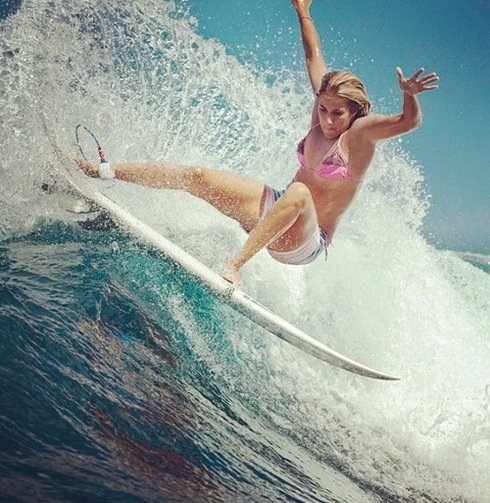Short board surfing techniques are different from soft top learning boards and long boards. The advantage of the short board is in the lower volume because short board surfers have different objectives.

Why Choose Short Board Surfing
The advantage of the short board over soft tops and long boards is maneuverability. Short boarders want more carving on waves and quick maneuvers long boards can’t easily complete.
The short board is obviously short, but thinner and narrower so the rails become the feature. The short boarder digs the rails for bottom turns, cut backs, and tricks off the top as reverses and aerials.
Not Easy to Move from Beginner To Short Board Surfing
People that begin to surf want to jump to short boards but they don’t realize short boards are harder to paddle, have to catch waves when they arc, and are not as easy to ride if fundamentals are not mastered.
The short board catches waves as they peak, so the surfer must have judgment and timing. The surfer lets the wave come under the board and as the nose tips down, the surfer gives three strong strokes before popping up. On steep waves, the surfer often points the board toward the pocket before popping up to make pocket entrance faster.
Short Board Surfing Techniques
After entering the pocket or the first bottom turn the surfer accelerates two or three times before the first maneuver. Accelerating is accomplished by running the nose of the board up and down the face with the front foot. This is a technique rarely explained in videos, books, or by advanced surfers.
Once the board is moving fast, the surfer does his first bottom turn up the face. On closing waves, a surfer may only get one rip off the top where he rides to the lip and reverses his upper body pointing down and then the torque reaches the board last whipping the tail.
A third technique is a cut back for show, stalling while waiting for the power of the wave, or to cut back to the power of the wave. Sometimes surfers do full cut backs and sometimes partial ones. The surfer rotates the upper body down the face and places pressure on the heels or toes, which ever is on the down side, and then carves a reverse turn.
When the surfer has reversed direction and reaches the lip or power of the wave, he does another cut back to get back into the power. There are a variety of tricks that are executed along the way such as planning on top of the wave, reverses, 360’s, and flips.
The keys are to accelerate for speed and then execute a maneuver and then accelerate again. On nice long rides like point breaks, surfers execute up to 15 maneuvers on a ride so it is great to have an arsenal.
For Oceanside Surf Lessons, see the Home Page
See my Dry Land and in Water Demo video
For surfing fitness or Personal Training in Oceanside see my site
For Life Style Self-Coaching and my Guide Book see my site 9 Climb